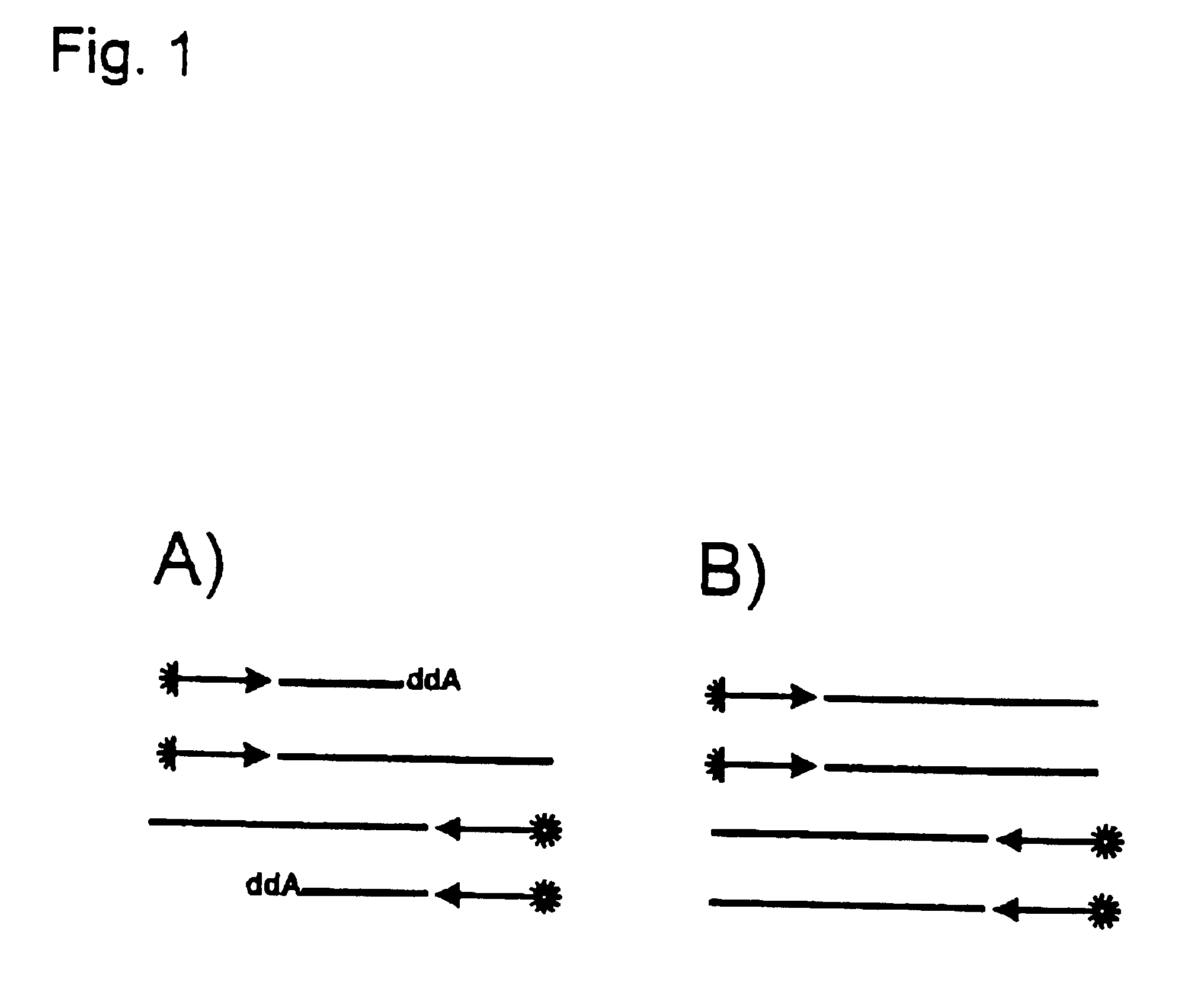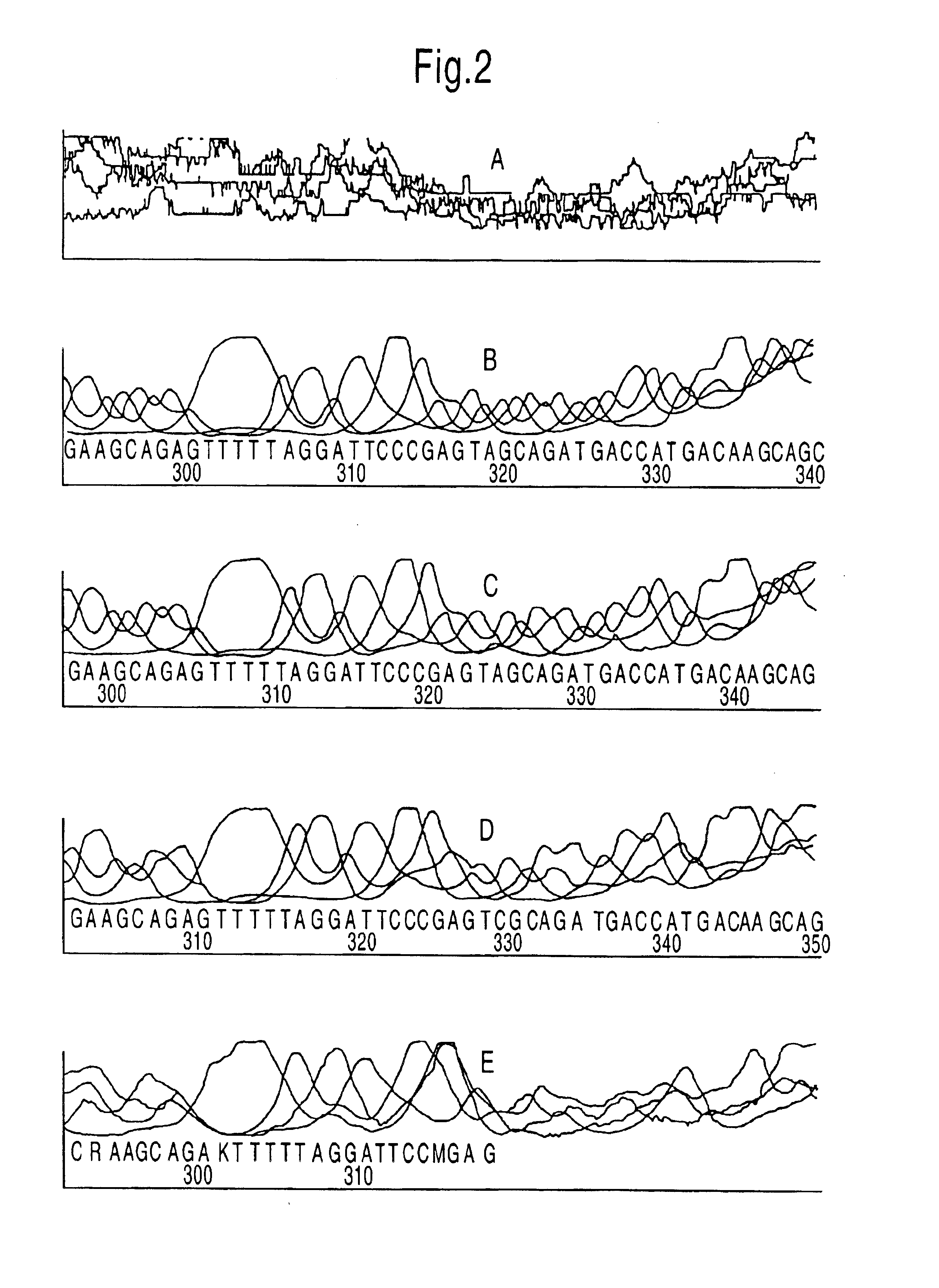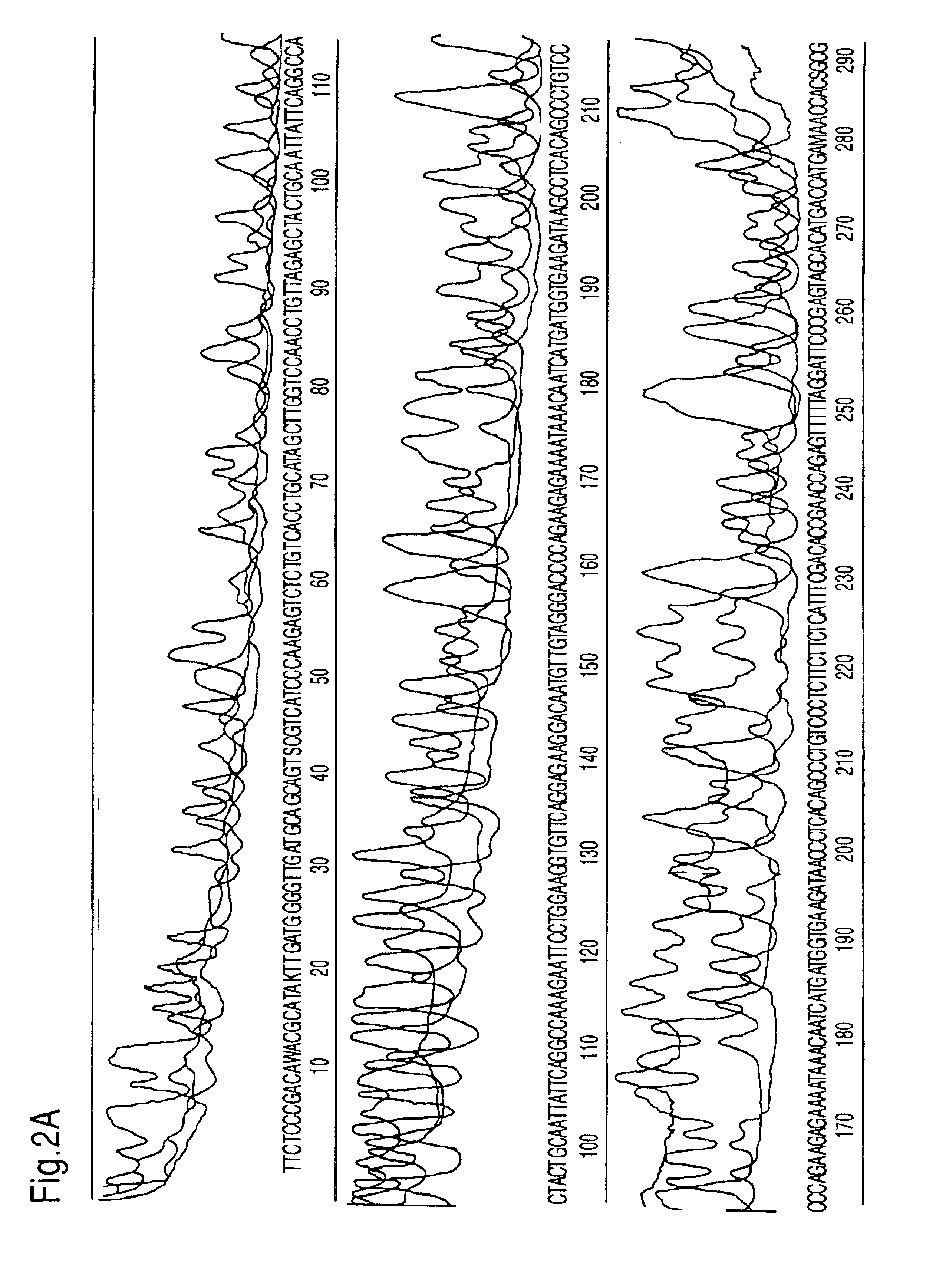Method for the uncoupled, direct, exponential amplification and sequencing of DNA molecules with the addition of a second thermostable DNA polymerase and its application
a technology of thermostable dna and exponential amplification, which is applied in the field of uncoupled, direct, exponential amplification and sequencing of dna molecules with the addition of a second thermostable dna polymerase and its application, can solve the problems of limiting the choice of primers, a.l.f. software was not able to process a sequence, and the method requires relatively large amounts of purified single-stranded dna
- Summary
- Abstract
- Description
- Claims
- Application Information
AI Technical Summary
Benefits of technology
Problems solved by technology
Method used
Image
Examples
example 2
Two oligonucleotides with a length of 25 and 27 nucleotides which span 3 82 base pairs of the CCR5 gene were synthesized. One of the two oligonucleotides was labelled at the 5'-end with fluorescein (CCR5-2) whereas the other (CCR5-1) was unlabelled. Two reactions were prepared each containing 6 pmol of the labelled primer and 3 pmol of the unlabelled primer, 500 ng total genomic DNA and ThermoSequenase reagent which was composed of enzyme, reaction buffer and deoxy and dideoxy mixtures. 2.5 units of standard Taq polymerase was added to one of the two reactions. The reactions were incubated for 3 min. at 95.degree. C. in order to enable a complete denaturation of the template DNA. Afterwards 45 cycles were carried out each consisting of 30 sec. at 68.degree. C. and 40 sec. at 95.degree. C. The reactions were stopped and denatured by the addition of formamide and heating to 95.degree. C. for 4 minutes before they were applied to an A.L.F. sequencing apparatus.
If no additional Taq DNA ...
example 3
In order to confirm the fact that additional Taq DNA polymerase is able to amplify the exponential factor and to reduce the background and also to determine the amount of Taq DNA polymerase required for an optimal reaction, a reduced amount of template DNA was used in combination with varying amounts of Taq DNA polymerase. Five reactions were prepared each containing 120 ng total genomic DNA, 6 pmol of the labelled primer and 3 pmol of unlabelled primer and ThermoSequenase reagent. In one reaction no additional Taq DNA polymerase was added. In the other 4 reactions 0.25, 0.5, 1.0 and 2.0 units Taq polymerase was added respectively. In order to exclude a possible effect of the Taq polymerase storage buffer, the storage buffer was added to that reaction to which no polymerase had been added. The reactions were subjected to the cycles described above.
In the case where no Taq DNA polymerase had been added the A.L.F. Manager was only able to process a few bases and the signal intensities...
example 4
Of the thermostable polymerases without a "Tabor-Richardson" mutation, a number of different polymerases were tested with regard to their effect on the direct, exponential amplification and sequencing reaction. Tth polymerase, Klentaq (U.S. Pat. No. 5,436,149, Korolev. S., et al., (1995) Proc. Natl. Acad. Sci. USA 92, 9264-9268), Sequitherm and standard Taq DNA polymerase were cycled with 60 ng total genomic DNA. Different unit amounts of 0.25 to 25 units (in the case of Klentaq) were tested for all polymerases (FIG. 3). The best results were achieved with Taq DNA polymerase.
PUM
| Property | Measurement | Unit |
|---|---|---|
| temperature | aaaaa | aaaaa |
| temperature | aaaaa | aaaaa |
| temperature | aaaaa | aaaaa |
Abstract
Description
Claims
Application Information
 Login to View More
Login to View More - R&D
- Intellectual Property
- Life Sciences
- Materials
- Tech Scout
- Unparalleled Data Quality
- Higher Quality Content
- 60% Fewer Hallucinations
Browse by: Latest US Patents, China's latest patents, Technical Efficacy Thesaurus, Application Domain, Technology Topic, Popular Technical Reports.
© 2025 PatSnap. All rights reserved.Legal|Privacy policy|Modern Slavery Act Transparency Statement|Sitemap|About US| Contact US: help@patsnap.com



